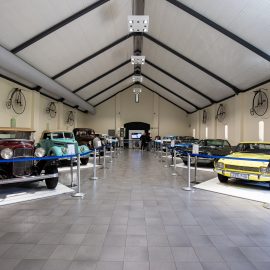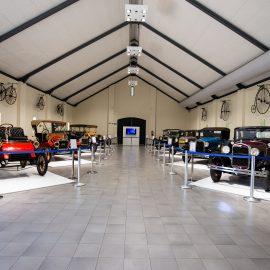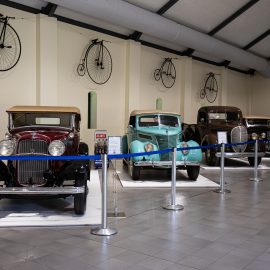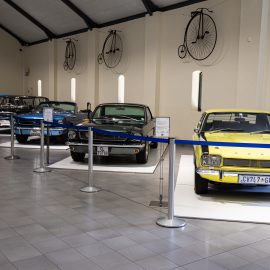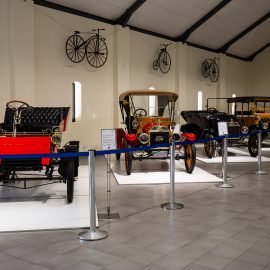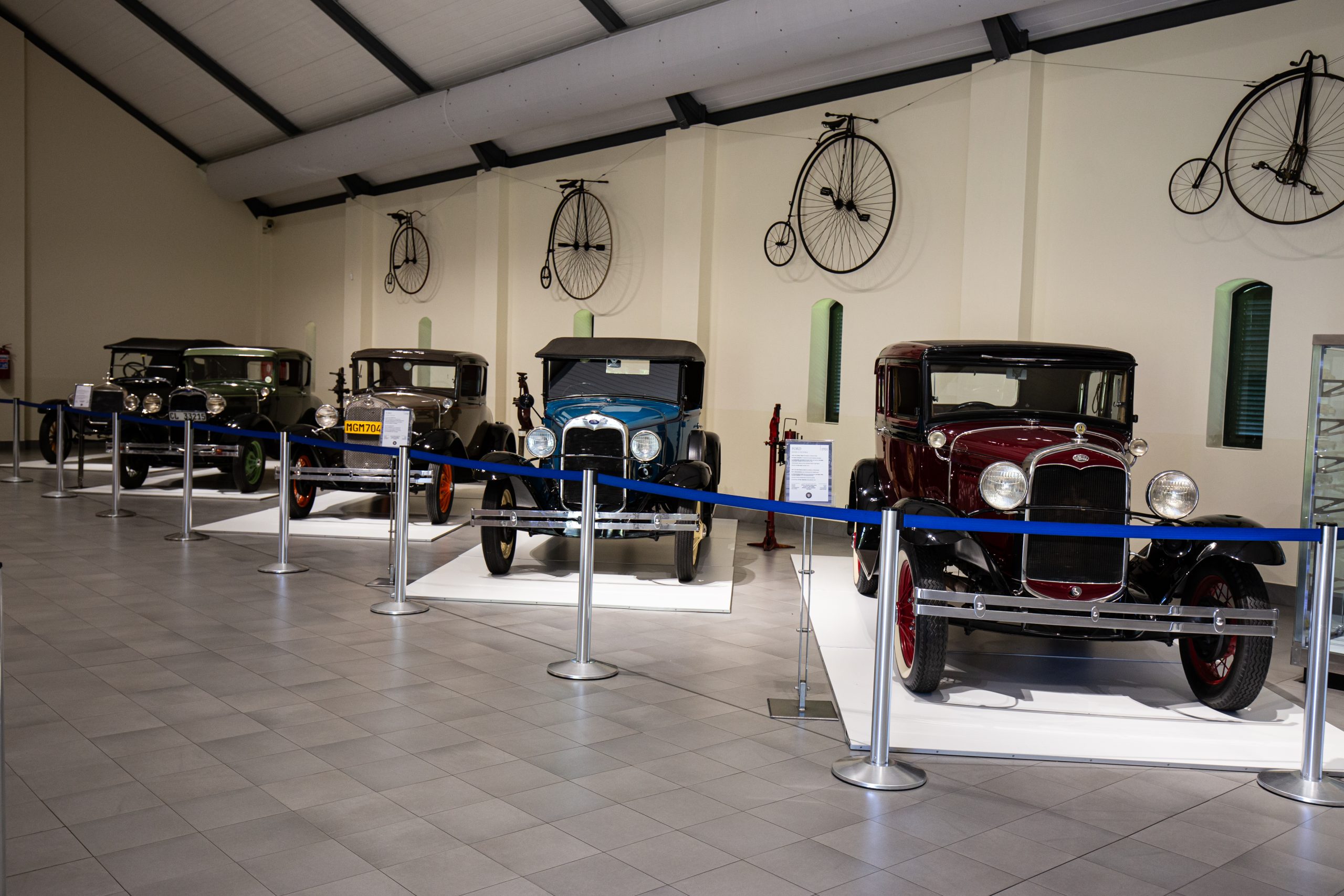
18 Dec Ford South African Centenary
Ford has played an integral role in South Africa’s history since establishing its local operations in 1923, boasting a proud tradition of pioneering achievements and industry milestones over the past century. In Hall C, FMM has put on a display of 20 Fords from the 1903 Model A – the oldest car in the museum’s collection – up to the unique-to-SA 1971 Capri Perana.
Signalling South Africa’s importance within the company’s global ambitions, Henry Ford made a strategic move when he appointed Arkell & Douglas in Port Elizabeth as the company’s agents in the country for the distribution and sale of Ford cars within the local market.
To meet the immense global demand for the Model T, Ford began building plants outside of the United States, and established Ford of Canada, which supplied vehicles to the British Commonwealth markets, including South Africa. The Model T quickly became SA’s most popular car, and it was only a matter of time before the decision was made to begin assembling vehicles in South Africa. In November 1923, Ford Motor Company of South Africa was founded in Port Elizabeth (now Gqeberha), operating as a subsidiary of Ford of Canada.
The local assembly operations began with the Model T, utilising completely knocked-down (CKD) kits imported from Canada. This pioneering move not only made Ford the first global vehicle manufacturer to establish operations in South Africa, but also introduced the continent’s initial assembly line of any kind. Assembly operations began on 19 January 1924 at a planned rate of 10 cars per day, and the first locally produced models went on sale in March that year. The company had 21 office staff along with 70 people in the assembly plant, and it turned out 1 446 vehicles in the first 12 months.
Ford soon outgrew the old wool store in Port Elizabeth. In October 1930, Ford Motor Company of SA relocated to a new factory in Harrower Road, spanning 7 032 sq.m and costing R1 110 503 at the time. Initially, the factory began producing the Model A at a rate of 90 vehicles per day. Over the following years, Ford’s Harrower Road facility underwent multiple expansions.
During WWII, the majority of the country’s manufacturing capacity was redirected to support the Allied campaign. The Ford plant played a significant role, producing almost 60 000 vehicles between 1939 and 1945, with 36 339 vehicles going to the Union Defence Force alone.
By 1947, Ford ramped up its expansion yet again, as construction began on a new plant in the Neave Industrial Township. The new R2-million facility officially opened on 1 October 1948. It provided employment for 1 100 people. Remarkably, all three of these early Ford plants, including the original wool store, are still standing today, albeit repurposed and sold to new owners over the years.
During the 1960s Ford made significant investments in the domestic automotive sector, announcing a R4 million expansion initiative in 1962. This involved the construction of a Parts and Accessories Warehouse in Struandale, an extension of the Neave plant to accommodate an engine assembly line, and the development of a new test track. Then, in October 1963, Ford announced a landmark R8-million investment in a dedicated engine manufacturing facility. The Struandale Engine Plant was officially opened by Henry Ford II in May 1964, making it the first motor company in South Africa to manufacture engines locally for passenger cars and trucks.
Ford’s extensive local testing, research and development was given a significant boost in 1966 when it purchased a 3 400-acre site, known as the farm Rietkuil, alongside the small St Alban’s Airport west of Port Elizabeth. A R2 million proving ground was built incorporating four test tracks of varying surfaces. In the 1960s and ’70s, the booming automotive industry prompted Ford to invest R9,25 million in a Struandale Assembly Plant, situated adjacent to the engine facility. This plant, specifically designed for Cortina production, commenced operations in 1973. Ford also operated a truck plant in Deal Party Estate, which did final assembly of its rugged D-Series and F-Series trucks using parts supplied from the Neave plant.
The political upheaval of the 1980s led to Ford entering negotiations with Amcar (the successor to the Sigma Motor Corporation) and Anglo American. These discussions culminated in the creation of the South African Motor Corporation (SAMCOR) in January 1985, which took over Ford’s local manufacturing, distribution, and sales operations. Ford’s 40% stake in SAMCOR was ultimately transferred to a trust, which subsequently allocated a large portion of the shares to its black employees – an unprecedented move at the time. This move led to all of Ford’s vehicle assembly operations in Port Elizabeth being relocated and consolidated at the SAMCOR plant in Silverton, east of Pretoria. The plant had previously formed part of Sigma, primarily functioning as a Chrysler plant, and then later transitioned into Amcar. The Struandale Engine Plant remained in Port Elizabeth, where it continues today.
In 2010, Ford confirmed a massive R3,4 billion investment in South Africa for its global export programme. This initiative included the production of the new Ranger at the Silverton Assembly Plant and the component machining and assembly of the 2,2- and 3,2-litre Duratorq TDCi engines at the Struandale Engine Plant. This investment effectively more than doubled Ford’s local manufacturing capacity to 110 000 vehicles per year.
Ford’s history includes a long list of iconic nameplates that have provided people with mobility for 100 years. But beyond the products, the buildings, the more than R30 billion invested in the past 13 years, and the extensive list of accolades, it is the people who have defined the brand and its legacy that truly matter. This includes generations of family members who have spent their entire careers at Ford, the dealers who have been the face of the brand for decades, the loyal customers who have blue blood flowing through their veins, and the numerous communities and individuals who have been empowered by Ford’s far-reaching employment opportunities and uplifted through its wide-ranging corporate responsibility initiatives.
Looking back is of great value and importance as it sets the tone for the future. Undoubtedly, there are many more interesting and exciting chapters still to be written as the Blue Oval embarks on bold steps into the next century.




